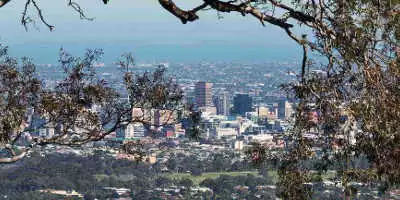See the Pandas at Adelaide Zoo
Adelaide is the only place outside of China to house giant pandas in the southern hemisphere. Wang Wang and Fu Ni were loaned to Adelaide Zoo by the Chinese government in 2009.
Since their arrival in Australia, the pair have been part of an international conservation and breeding program. However, they have had little success in their endeavours to produce offspring.
Having a Panda
Breeding pandas has proved to be incredibly difficult, not just for the team at Adelaide Zoo but at conservation organisations across the globe.
Firstly, they have an incredibly short mating period. Males and females will only associate with each other for four days a year, after that, it’s a guessing game for keepers. The gestation period varies anywhere from 95 – 160 days and due to their physical structure, keepers are unable to ultrasound the animals to know if they are pregnant at all.
It is not uncommon for keepers to believe a panda is pregnant until the gestation period passes without the birth of a cub.
Pregnant or not?
Fu Ni is no stranger to the idea of a fake pregnancy.
In 2017, during the Adelaide Zoo’s third attempt at producing a cub, Fu Ni began to strongly exhibit nesting behaviours. After being artificially inseminated in late 2016, hormonal changes in Fu Ni suggested that she had become pregnant.
Come March 2017, and she began to go into labour, breathing heavily and experience contractions. However, no baby was born. And it wouldn’t be the last time.
For three consecutive years Fu Ni has been displaying symptoms of pregnancy without ever producing a cub. In fact, it was almost a year to the day in 2017, 2018, and 2019, that it was announced Fu Ni was not having a cub.
So she was faking?
Once is a change, twice is a coincidence, three times? Surely there’s something going on there.
There has been some suggestion that Fu Ni enjoys the extra food and attention she gets when keepers believe her to be pregnant. Some believe that this has resulted in her faking a pregnancy. While that makes for a great story it isn’t quite true.
Fu Ni has experienced three pseudo pregnancies. Due to the large size of her to any potential in-utero cub, it is incredibly difficult to determine pregnancy via ultrasound. And she isn’t the only one. Mei Xiang of the Smithsonian’s National Zoo had four pseudo pregnancies after the birth of her first cub in 2005. Tian Tian in Edinburgh Zoo also has a track record of pseudo pregnancies!
In fact, the highest success rate of panda births is within a single breeding centre in China. The rest of the world has struggled.
What now?
For the time being the keepers at Adelaide Zoo will continue to try an get Wang Wang and Fu Ni to have a cub. In 2019 the Chinese government extended the panda loan until late 2024, so you’ve got until then to come down to Adelaide and see them!
Why not book onto our Adelaide City Tour and spend your morning exploring all the city sites. Then, head out to the Adelaide Zoo for an afternoon of seeing animals and watching the gorgeous pandas in their exhibits.
We can only hope that 2020 will be the year we finally get the panda cub we’ve been waiting for!
Related article: What is South Australia famous for?





